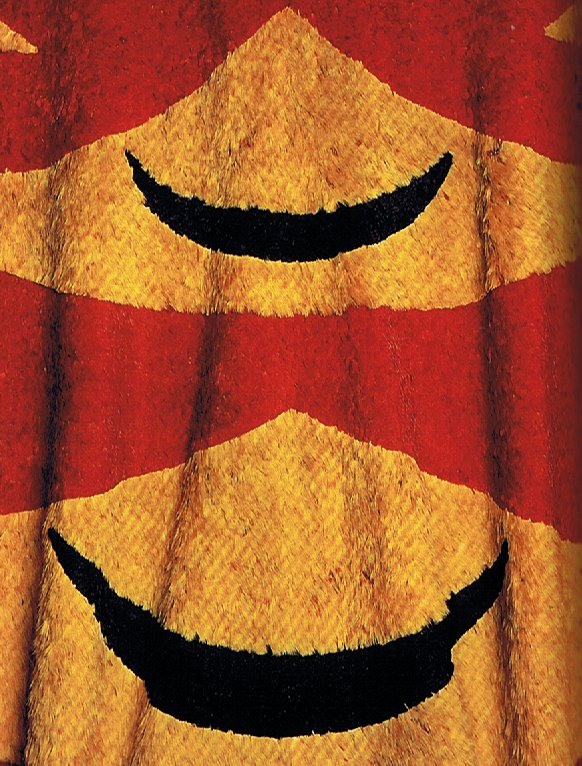The new generation of growth was preceded by falling leaves and falling fruits - and also by Ulu falling 'on his face', dying in order for his little son to live. Like an old tree he fell down: ... The people (mahingo) listened as he spoke. The king called out to his guardian spirits (akuaku), Kuihi and Kuaha, in a loud voice: 'Let the voice of the rooster of Ariana crow softly. The stem with many roots (i.e., the king) is entering!' The king fell down, and Hotu A Matua died. Then all the people began to lament with loud voices. The royal child, Tuu Maheke, picked up the litter and lifted (the dead) unto it. Tuu Maheke put his hand to the right side of the litter, and together the four children of Matua picked up the litter and carried it ... This should have happened before the new Sun had reddened the morning sky, before tapa mea.
In the early morning a 'perfect thicket of vegetation' had grown up surrounding the house and ... on the very spot where she had buried her husband's heart, there grew a stately tree covered over with broad, green leaves dripping with dew and shining in the early sunlight, while on the grass lay the ripe, round fruit, where it had fallen from the branches above. And this tree she called Ulu (breadfruit) in honor of her husband ... We should here return to Tagaroa: ... Long ago in the very beginning of time there dwelt within a shell an infant god whose name was Ta'aroa. He was Ta'aroa the unique one, the ancestor of all gods, the creator of the universe whose natures were myriad, whose backbone was the ridgepole of the world, whose ribs were its supporters. The shell was called Rumia, Upset. Becoming aware at last of his own existence and oppressed by a yearning loneliness Ta'aroa broke open his shell and, looking out, beheld the black limitless expanse of empty space. Hopefully, he shouted, but no voice answered him. He was alone in the vast cosmos. Within the broken Rumia he grew a new shell to shut out the primeval void. Eons passed and Ta'aroa grew to be a lad conscious of his own vigor and potentialities. Impatience grew upon him until he could bear his isolation no longer. He broke forth from his shell with energy, resolved to create beings like himself who would banish his loneliness forever. Ta'aroa's first act was to construct a firm foundation for the earth, using the strong second shell for stratum rock. The shell Rumia became his dwelling place, the overarching dome of the sky. It was a confined sky enclosing the world just forming, and in its deep and abiding night the lad attained manhood. There were no Sun, Moon, or stars and only one other living creature, the Great Octopus. The sun was held down close above the slowly evolving earth by the Great Octopus, Tumu-rai-fenua, Foundation of Heaven and Earth, who lived in the primeval waters on which the earth floated. One of his arms was to the north, one to the south, one to the east and another to the west. With these vast arms he held the sky, the shell Rumia, close down against the earth. Meanwhile on the earth itself various generations of rocks were born, one after the other; then sand appeared. Roots were born and as they spread they held the sand together and the land became firm. Ta'aroa sat in his heaven above the earth and conjured forth gods with his words. When he shook off his red and yellow feathers they drifted down and became trees ... I guess the falling feathers of Tagaroa could have motivated the 'feathers' in front where Algenib Persei rose with the Sun. They could have expressed 'red and yellow' and niu was a tree:
When Black Raven, personified by Gienah, culminated at midnight in May 10, it could have been a Sign. A vertical separation (koti) is visible at left in Gb8-17. Night 314 (November 10) at glyph 460 implies another 314 could be at May 11, because the circumference of a circle is 2 * 314 (times the appropriate value for the radius).
(Feather cloak from Hawaii. Picture copied from Anne D'Alleva, Art of the Pacific.) | ||||||||||||||||||||||||||||||||||||||||||||||||||||||


